
views
Cutting and Gluing the Paper Strips
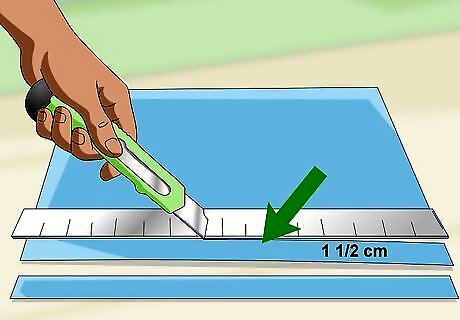
Cut 2 1 ⁄2 centimetres (0.59 in) wide strips out of paper. Get some construction paper or colored printer paper that's about 11 to 12 inches (28 to 30 cm) long. Orient the paper landscape style, then use a pencil and a ruler to draw a set of 1 ⁄2 centimetres (0.59 in) wide strips. Cut the paper using a paper slicer or a craft blade and a metal straight edge. You can cut the paper using scissors, but the edges may end up crooked. If the paper is longer than 11 to 12 inches (28 to 30 cm), cut it shorter.
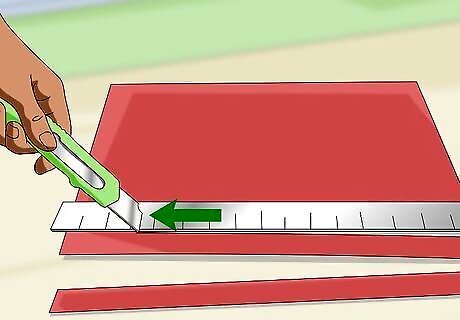
Cut another set of strips out of a contrasting color. Get another sheet of colored, 11 to 12 in (28 to 30 cm) long printer or construction paper. Draw 2 more 1 ⁄2 centimetres (0.59 in) strips, then cut them out with a paper slicer or a craft blade and a metal straight edge. When you are done, you should have 4 strips of paper, 2 of each color.
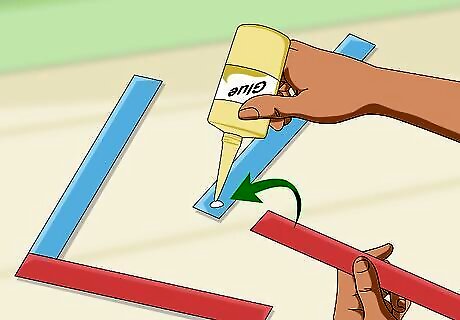
Glue 2 strips of paper together to create a right angle. Take 1 strip of each color and overlap the ends to create a right angle or L-shape. Glue the ends with hot glue, liquid school glue, or a glue stick. Let the paper dry before moving on. Do this step twice, once for each set of strips. Make sure that you are gluing 2 different colors together. For example, if you have 2 yellow and 2 orange strips, glue the yellow and orange strips together.
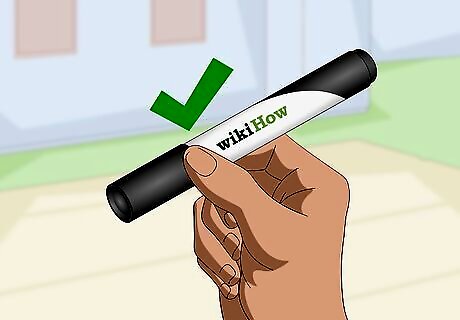
Find a thick marker about the width of your finger. A permanent marker or a highlighter could work well for this. You can also use a dowel or a rod of some sort. Do not use a skinny ballpoint pen or a pencil, however; or the finger trap will end up too thin!
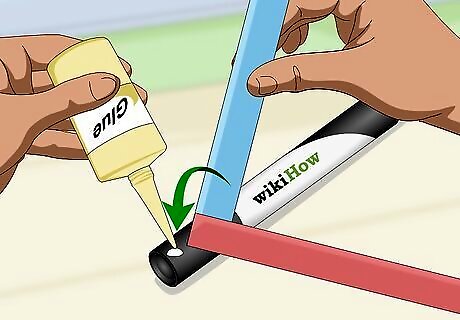
Glue 1 of the L-shapes to the end of the marker to make an arrow shape. Make a drop of hot glue near the end of the marker. Take 1 of your glued-together strips, and place the point into the glue. The strips and the marker should look like an arrow when you are done. The hot glue should be on the side of the marker, right against the bottom edge. Don't put it at the very tip. The hot glue will keep the paper in place as you weave it. You can also wrap a strip of double-sided tape around the marker instead. Pay attention to the color that's facing you. For example, if you used yellow and orange for your paper, and the yellow strip is facing you--remember that!
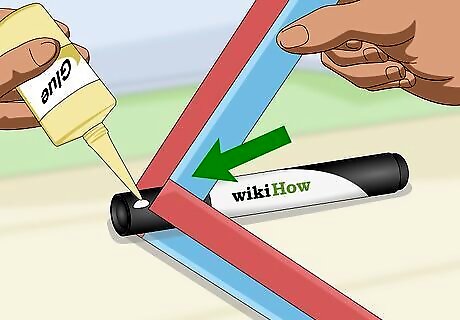
Glue the second set of strips to the other side of the marker. Rotate the marker so that the strips of paper are now on the back. Make another drop of hot glue on the end of the marker, and press the second set of paper strips down into it. Make sure that both sets of strips are aligned. If you look at the marker from the front and back, you should still see the arrow shape. Make sure that the same color is facing you. For example, if the yellow was facing you on the first set of strips, the yellow should be facing you on this set of strips.
Weaving the Paper Strips
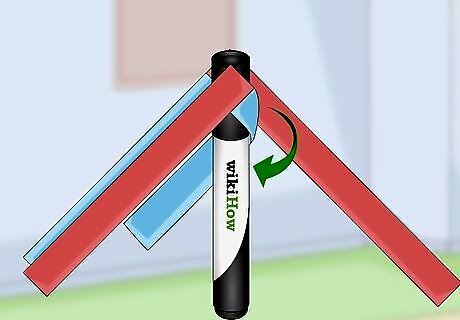
Wrap the front-right strip to the back of the marker. Rotate your marker so that you have 2 strips in the front and 2 strips in the back. Take the front-right strip and wrap it around the right side of the marker. Slide it under the back-right strip. This section is a little bit like weaving a basket or rug. If you get lost at any point, just remember to weave the strips over and under each other.
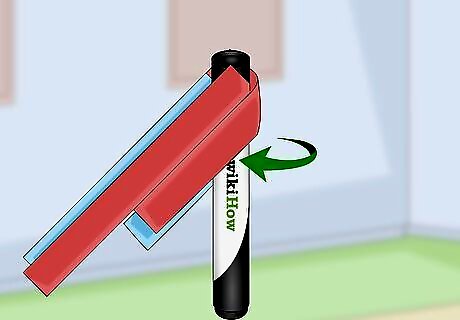
Bring the back-right strip to the front of the marker. Take the back-right strip, and pull it around the right side of the marker to the front. Cross it over the front-right strip that's already wrapped around the marker. You are weaving with the old back-right strip, not the new one you just wove into the back.
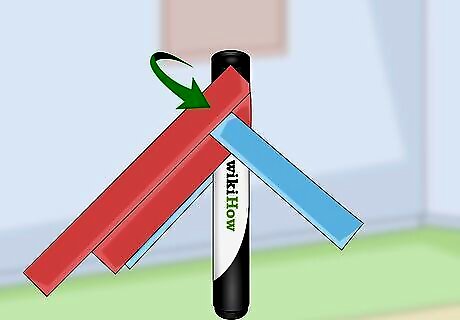
Wrap and weave the back-left strip to the front of the marker. Take the left strip that's behind the marker. Wrap it around the left side of the marker. Pull it under the front-left strip and over the front-right strip. You should already start seeing the woven pattern taking place.
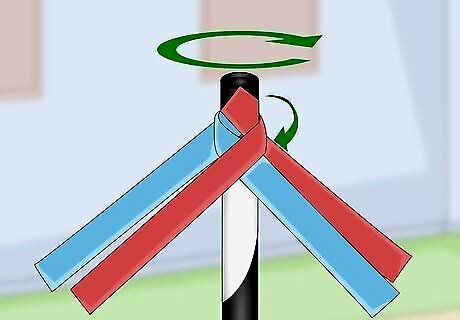
Rotate the marker and wrap the back-right strip over to the front. Rotate the marker so that you can see the back strips. Take the strip that's behind the marker on the right side. Wrap it under the marker and to the front. Weave it under the front-right strip. This step completes the first set of weaves. Your strips should form an X on the front and on the back of the marker.
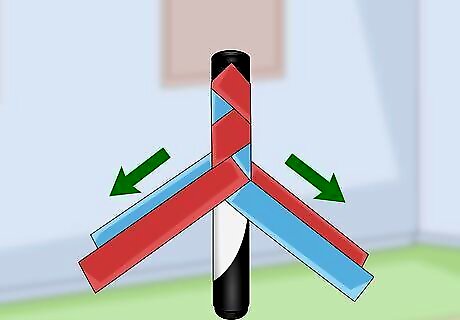
Tighten the strips and repeat the process. Pull the right strips to the right and the left strips to the left so that they tighten around the marker. Continue to weave the strips over and under each other around the marker until you reach the end. There are lots of ways to weave the strips, and you may invent a method that works for you. The goal is to weave both sets of strips around the marker.
Finishing the Finger Trap
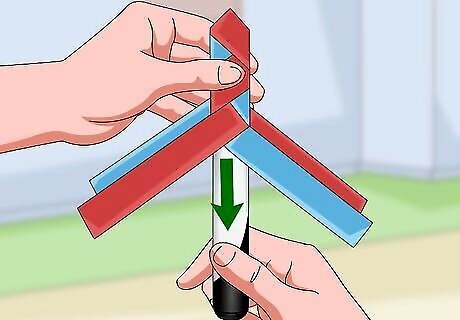
Slide the marker up through the finger trap and continue weaving. Chances are, you may run out of room on the marker to weave the paper. Find the end of the marker, and peel the ends of the paper away from the glue or tape. Slide the marker through the finger trap until it sticks out of the other end. You now have more marker to weave over! You don't have to glue or tape the ends of the paper down after this. You may have to push the marker through the finger trap a few times in order to make room for weaving. How much you push the marker up by does not really matter. As long as you have enough room to keep weaving the paper, you're all set!
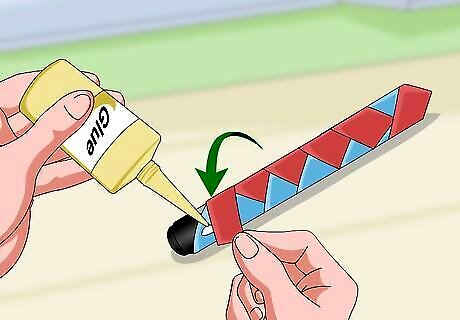
Overlap and glue the ends of the strips together. As you weave the paper, you'll notice it becoming shorter and shorter. When you have about 2 centimetres (0.79 in) leftover, finish weaving the paper, then glue the ends of the strips together. Do the 2 strips on the front of the pen first, then do the 2 on the back. Once again, you can use hot glue, liquid school glue, or a glue stick.
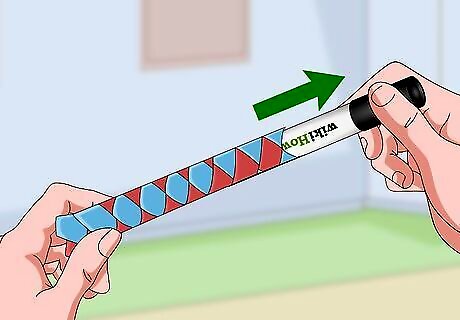
Slide the marker out of the finger trap. The trick to using a Chinese finger trap is to gently slide your finger (or marker in this case) out. Don't yank the marker or pull it too hard. Depending on how tightly you wove the paper, you may be able to just stand it on its end and let the marker slide out on its own.
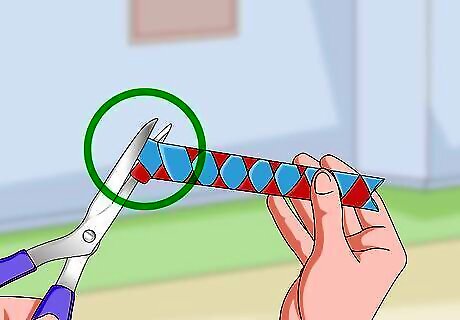
Trim the paper, if needed. When you glued the strips together in the beginning, they made perfect right angles. When you glued them at the end, however, you may have ended up with some paper sticking out from under the top strip. Use scissors to trim this excess paper off so that it is even with the paper that's on top. For example, if you have an orange strip sticking out from under a yellow strip, trim it down until it is flush with the yellow strip.
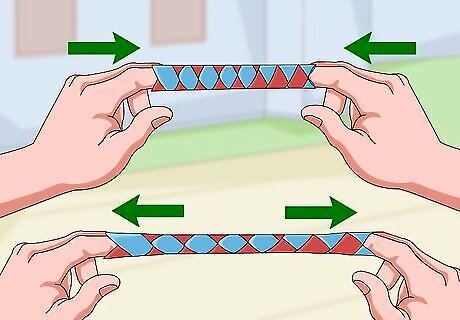
Slide both index fingers into the trap, then try to pull them out. The harder you pull on your fingers, the tighter the trap will become. The trick is to push your fingers together so that the trap widens. Once the trap widens, brace it with your thumbs, then slide your index fingers out. Be careful not to flatten the finger trap. If the paper strips develop creases, they won't slide past each other, and the trap won't work as well.




















Comments
0 comment